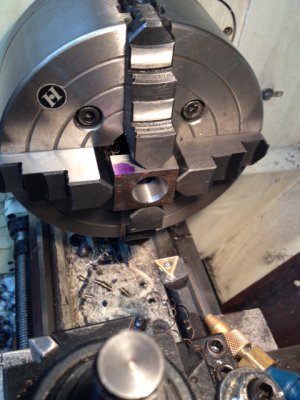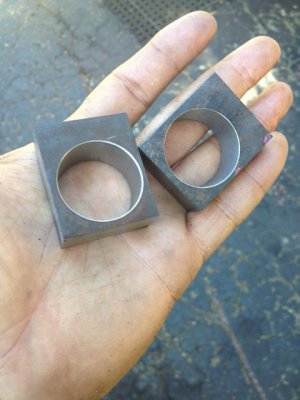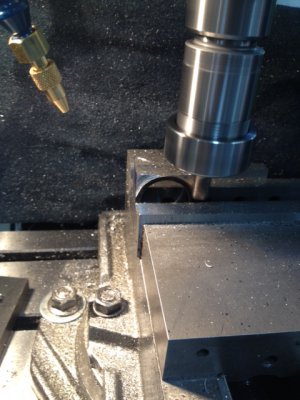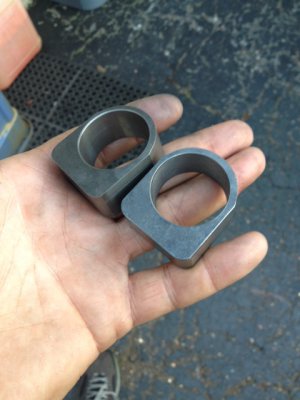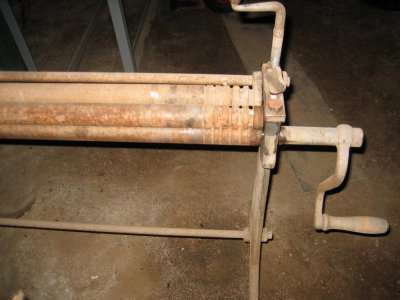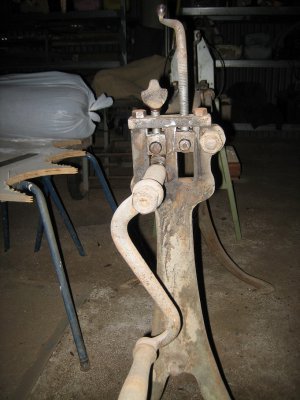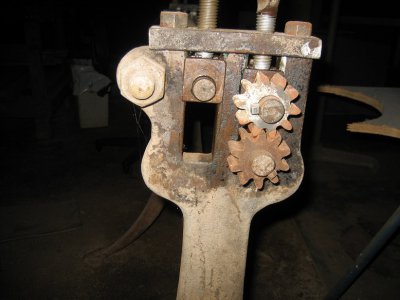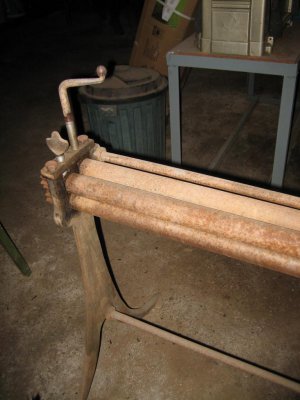- Joined
- Nov 16, 2012
- Messages
- 5,596
I've got a couple projects coming up that will need a slip roller and will need to make one in the next two weeks. Here's a quick CAD view of the approximate design. I might tweak this a little bit more but this is what it's looking like so far. This will be made out of 1045 and everything will be hardened. The rollers were cut today and are currently 1.410" diameter and will be hardened to somewhere around RC 48-50 then brought down to 1.400" (and I'll use the dreaded ceramic inserts for the final cut). They're 12" long and the pinch area is 10.5" long.
In the drawings, the green circles are needle roller bearings (I forgot to insert a bearing on the top roller). There will be a tapped hole and bolt at each end (not shown yet) to compress the yellow roller guides downward. I ordered some 1x1.25x3/4 needle bearings that have a 40,000lb static rating -way more than enough to make the stainless steel hoops I need to make. The shaded plate with a semi-circle is a keeper tab to hold the top roller and can be taken off to remove the roller when forming full loops.
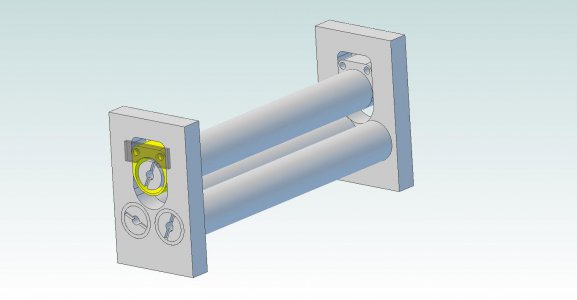
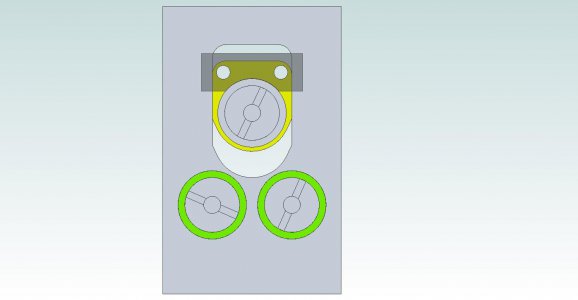
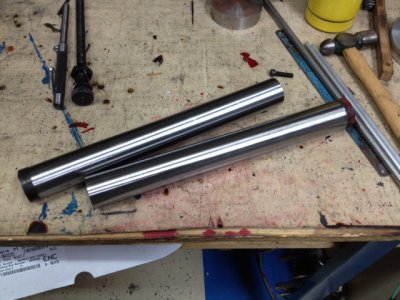
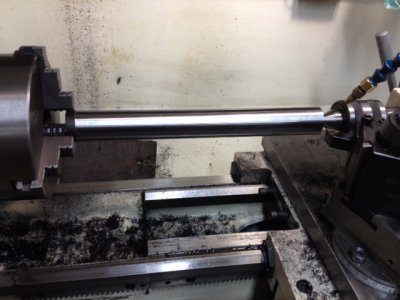
I'll show pics as this progresses...
Ray




In the drawings, the green circles are needle roller bearings (I forgot to insert a bearing on the top roller). There will be a tapped hole and bolt at each end (not shown yet) to compress the yellow roller guides downward. I ordered some 1x1.25x3/4 needle bearings that have a 40,000lb static rating -way more than enough to make the stainless steel hoops I need to make. The shaded plate with a semi-circle is a keeper tab to hold the top roller and can be taken off to remove the roller when forming full loops.




I'll show pics as this progresses...
Ray






